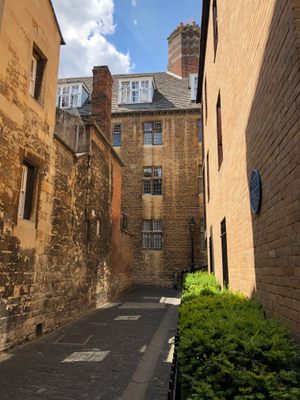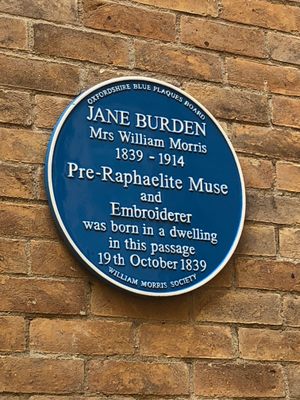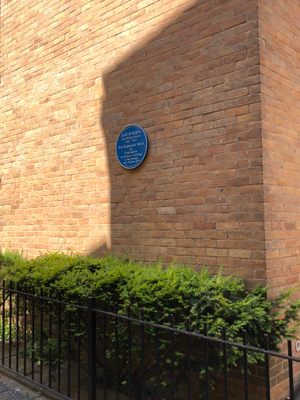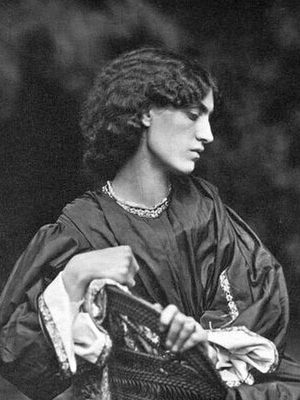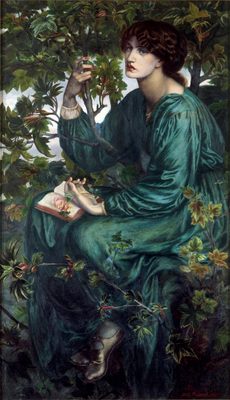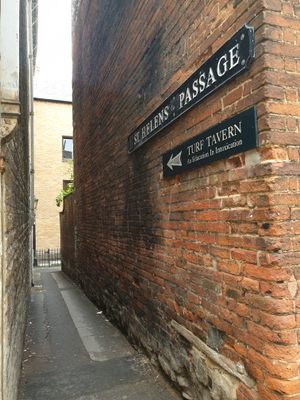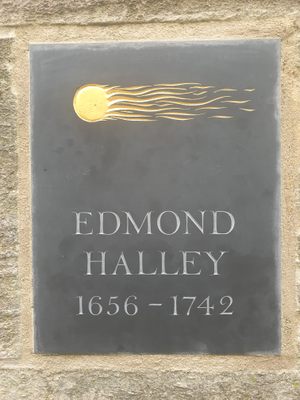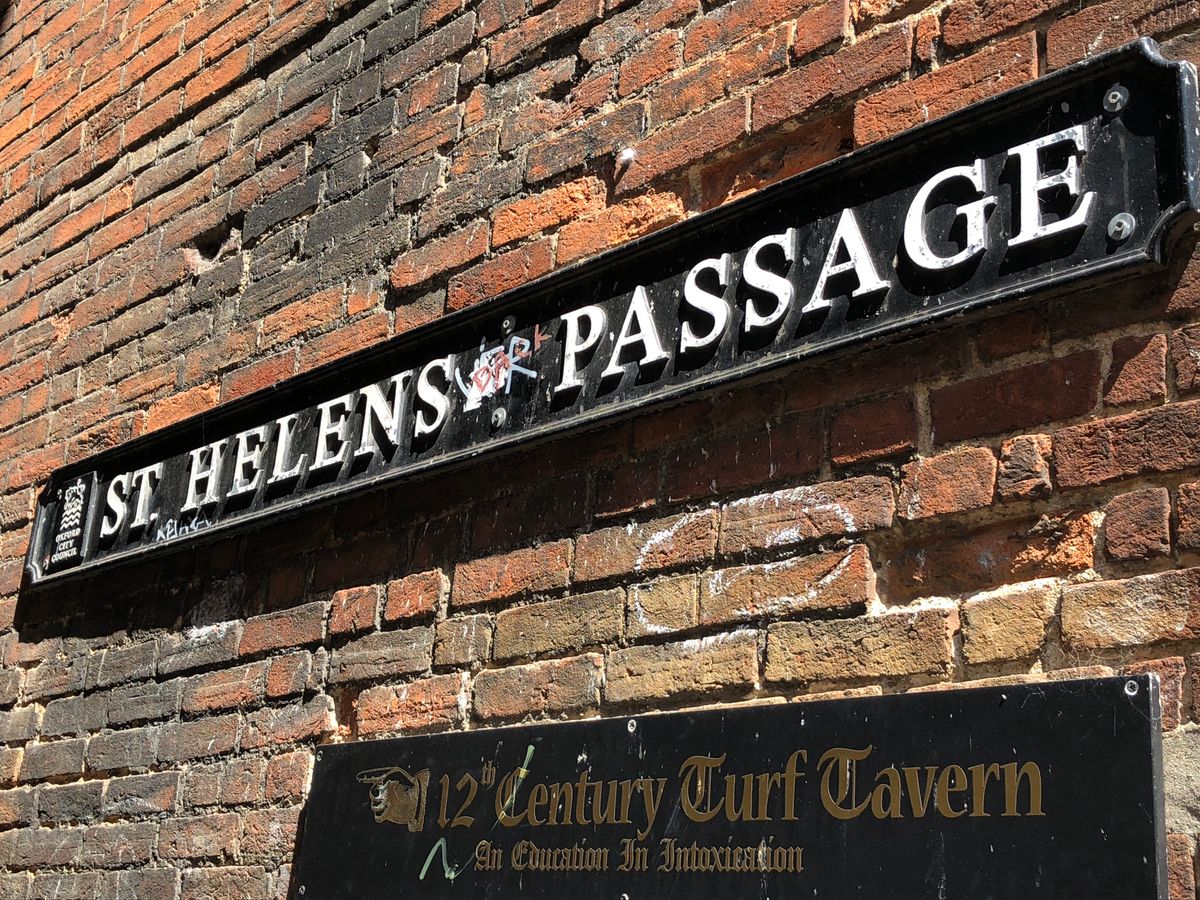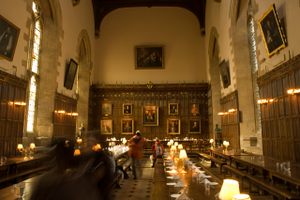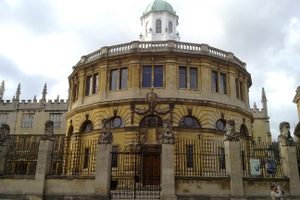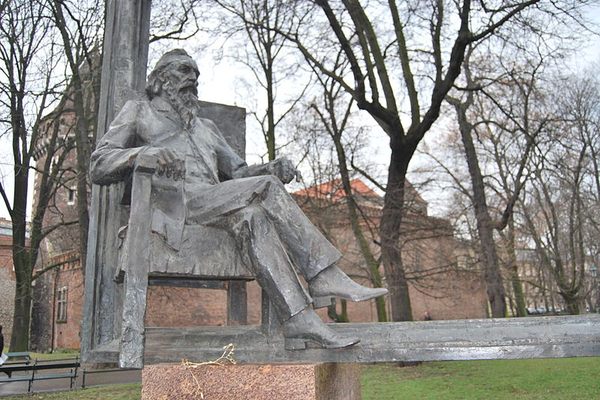About
Arguably one of the most famous muses in history, Jane Burden was a major figure in the 19th-century Pre-Raphaelite art movement, a secret society of English artists who favored the style of medieval and early Renaissance art from before the time of Raphael.
As the embodiment of Pre-Raphaelite beauty, Burden was the favorite model for Dante Gabriel Rossetti, one of the leading artists of the Pre-Raphaelite Brotherhood, as the society was called, as well as the great Victorian designer-poet-polymath William Morris, whom she later married.
Burden's origins, however, were very humble, as noted by the blue plaque hidden in an Oxford back-passageway marking her birthplace. She was born into a poor family in a dwelling down St Helen's Passage, also known as "Hell Passage." Although more pleasant than it was during the Victorian era, the alleyway remains there today, and imaginative passersby can get a sense of the confined squalor of Burden's early home.
As the daughter of a stableman and an illiterate domestic servant, Burden's childhood was one of deprivation. She became, however, a "plucked from poverty" archetype when she attracted the interest of Rossetti and artist Edward Burne-Jones on a trip to the theater. Ever on the lookout for "stunners," the pair approached her and asked her to sit and pose as Guinevere for an Arthurian mural they were painting in the Oxford Union.
From there, Burden was absorbed into the lavish and fantastical world of the Pre-Raphelite Brotherhood. William Morris fell in love with her and later married her. Rossetti, likewise, loved her and painted her repeatedly. Her iconic thick mass of wavy dark hair, full lips, long neck, and sullen expression can be seen in a number of the Rossetti's works, such as Proserpine and The Blue Silk Dress. The three lived in an unconventional ménages-à-trois arrangement at Kelmscott Manor in the countryside for many years.
Rapidly raised in status, Jane Burden (now Jane Morris) was given an education befitting a "gentleman's wife." Thanks to her own efforts and intelligence, she is reported to have become a refined lady who could play the piano, speak French and Italian, and move comfortably in the artistic society and upper-class circles in which she now existed. The character Eliza Doolittle in George Bernard Shaw's Pygmalion (and subsequently the film My Fair Lady) was inspired by Burden.
The blue plaque in the back alley, though, brings it all back to Burden's basic beginnings. As a celebration of a key female figure in art history and a record of a true fairytale story that started in the shadows of the City of Dreaming Spires, the plaque is an evocative marker for those who pass it.
Related Tags
Know Before You Go
The plaque is on display midway down St Helen's Passage. The passage sits between New College Lane and Holywell Street (though it becomes Bath Place before linking up to Holywell Street). If in doubt, look out for the Turf Tavern which is situated in the passage. On the New College Lane side, the entrance to the passage is just after the Bridge of Sighs on the left side of the street. The alley is always open to the public and the plaque can be seen any time.
Published
April 8, 2019
Sources
- http://www.oxfordshireblueplaques.org.uk/plaques/burden.html
- https://en.wikipedia.org/wiki/Jane_Morris
- https://www.theparisreview.org/blog/2016/09/01/beauty-marks/
- https://upload.wikimedia.org/wikipedia/commons/5/55/Dante_Gabriel_Rossetti_-_Jane_Morris_%28The_Blue_Silk_Dress%29.jpg
- https://en.wikipedia.org/wiki/Proserpine_(Rossetti_painting)#/media/File:Dante_Gabriel_Rossetti_-_Proserpine_-_Google_Art_Project.jpg
